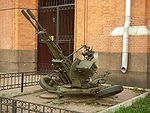The
Estonian Defence League (
Estonian:
Eesti Kaitseliit) is the name of the unified paramilitary armed forces of the
Republic of Estonia. The Defence League is a
paramilitary defence organization whose aim is to guarantee the preservation of the independence and sovereignty of the state, the integrity of its land area and its constitutional order.
The Defence League possesses arms and engages in military exercises, fulfilling the tasks given to it by the law. The organization is divided into 4 Territorial Defence Districts that consist of 15 Defence League regional units, called
malevs, whose areas of responsibility mostly coincide with the borders of Estonian counties.
The Defence League is a voluntary military national defence organisation, which acts in the area of government of the Ministry of Defence. The Defence League possesses arms and engages in military exercises. The main goal of the Defence League is, on the basis of the citizens’ free will and initiative, to enhance the readiness of the nation to defend its independence and its constitutional order, including in the event of military threat.
The Defence League plays an important role in supporting the civil structures. Its members aid in putting out wildfires, volunteer as assistant police members, and ensure safety at various events. Units, consisting of voluntary members of the Defence League, also participate in international peace support operations such as in the Balkan states. The Defence League and its affiliated organisations have positive relations with partner organisations in the Nordic countries, the United States, and the United Kingdom.
| Size (Territorials) | Total: 25,550 (2020)
Active members: 14,002 (2020) |
|---|





:quality(70)/cloudfront-us-east-1.images.arcpublishing.com/archetype/T56QBU72ENGJFDW43F4OFETNJQ.jpg)







